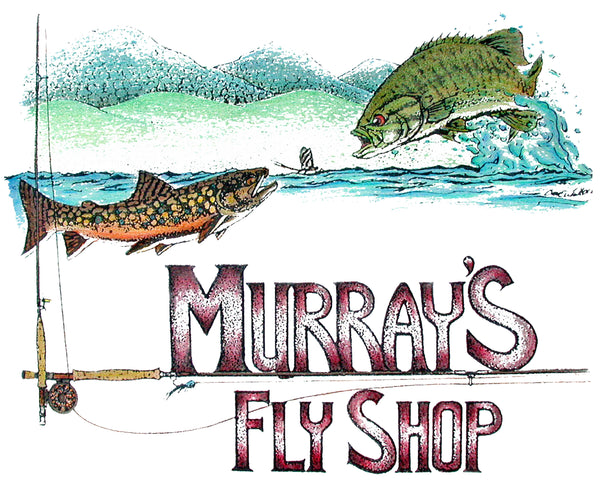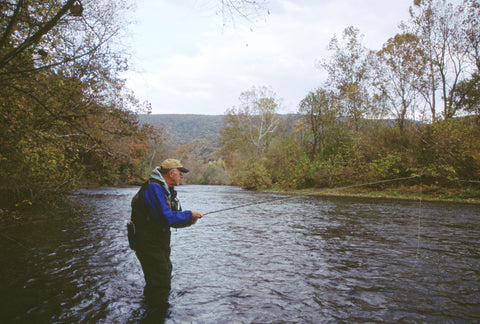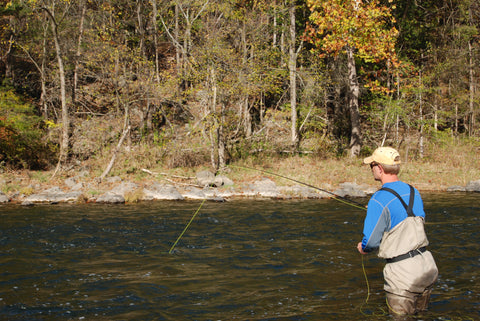Fly Fishing in the Fall on the Shenandoah River
Fly Fishing for Smallmouth Bass in September and October on the Shenandoah River
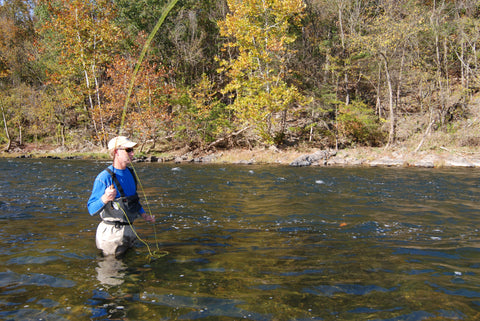
More large smallmouth bass are taken on Virginia's Shenandoah River during the fall than throughout the rest of the season. Add to this the fact that one can expect to take large numbers of average size bass and that the fall foliage looks like the backdrop of a Winslow Homer painting and you have truly fine angling conditions.
In September the specific tactics can be chosen to meet the whims of the angler since the bass will readily take nymphs, streamers and top water patterns. Many anglers choose poppers because they enjoy the enticing action they can impart to a surface bug and seeing the powerful strike of a nice bass as he hits on top.
Two of the most popular poppers are the Shenandoah Blue Popper size 4 and the Shenandoah Chartreuse Chugger size 4.
When fishing surface bugs for smallmouth one should concentrate on those areas where the bass are accustomed to feeding on top. You can hardly go wrong in working the banks and around islands if the water is two to four feet deep with a moderate current. If both river banks are about equal in cover the shady side will usually give you the best action---this translates into fishing the east side of a river in the mornings and the west side in the evenings. If, however, you have large trees along the banks shading the water you can take good bass on top all day.
Streamers are effective throughout the fall. How late into the season this action will last depends upon how quickly cold weather approaches. Normally I experience good smallmouth fishing on the Shenandoah drainage until mid October. However, some years I do well on into mid November.
Hellgrammites are found in good numbers throughout the entire Shenandoah system. Murray's Heavy Hellgrammite in black and also olive are some of the most productive flies.
When fishing these Hellgrammites I get my best results by fishing them close to the stream bottom over rocks ranging from softball size up to basketball size. Natural hellgrammites are often concentrated below strong riffles, so it is wise to fish these areas carefully. Unfortunately, the strong currents here often make it difficult to work the streamer across the stream bottom before it is swept out of the productive water. By teaching the students in my fly fishing schools the technique of working these areas down and across stream with a moderately fast sinking tip fly line they often take some sizeable bass that couldn't have been reached with a floating line. Remember, when using a sinking tip fly line a short leader will help keep your fly close to the bottom.--A Murray's 6ft Fluorocarbon Sinking 2X Leader is excellent.
Chub minnows abound throughout the Shenandoah drainage. Shenk's White Streamers and Murray's Magnum Creek Chub both in size 4 are excellent chub imitators. By working the heavy water in the upper parts of the pools and the deep cuts between ledges with a down and across presentation you'll take a good number of nice smallmouth in the fall. A slightly different ploy which works well with chub patterns is what I call the "bounce retrieve". Here the streamer is cast up or up and across stream at a very slight angle on a short line and allowed to sink to the bottom. Then, keeping a tight line with the line hand the rod is methodically raised and lowered about every three or four feet of the drift. The goal is slowly jig the streamer along the stream bottom.
Murray's Crayfish and Olive Strymph are excellent in the fall. These can be fished effectively across stream or with the conventional upstream dead drifting method.
The latter ploy is especially effective in the heavy runs below riffles and in fast deep pocket water. It is imperative to see the strikes when fishing upstream. Years of experimenting to find a "strike detecting system" to help the students in my bass schools, as well as myself, has led me to the Bright Butt Leader where five feet of the butt of the leader is constructed with fluorescent monofilament. Additionally I install two Scientific Anglers Indicators along the leader. When fishing, I watch the indicators and the bright leader butt for the slightest hint of a strike and set the hook forcibly with both the rod and the line hand when he takes the fly.
Other excellent flies for smallmouth in the fall are the Murray's Magnum Hog Sucker size 4, Murray's Magnum Bluegill size 4, Murray's Pearl Marauder size 6, Murray's Olive Marauder size 6, and Murray's Black Marauder size 6. I do best with these flies by swimming them slowly across the stream bottom with a 6 inch line hand stripping action every 10 seconds.
There is good access to both the North and South Forks of the Shenandoah River. Come by the fly shop in Edinburg, VA and I'll be glad to go over the maps with you to show you the best locations.
Now that we have covered the flies and tactics, let's take a look at the recommended gear. I like to use a 9ft. 7-weight fly rod for my smallmouth fishing because it enables me to cast the large flies smoothly and accurately. My favorite--Scott Radian 907/4 and Scott Flex 907/4. Most of my bass fishing is done with a weight forward (WF-7) floating line but I do find that (WF-7-F/S) sink tip III line very helpful in deep fast water.
Fall is such a wonderful time to be on the bass streams that I try to be on them at least some time of each day.
What to learn more about fly fishing? Take a look at our 2 hour fly fishing classes held at our fly shop on Saturdays.
-
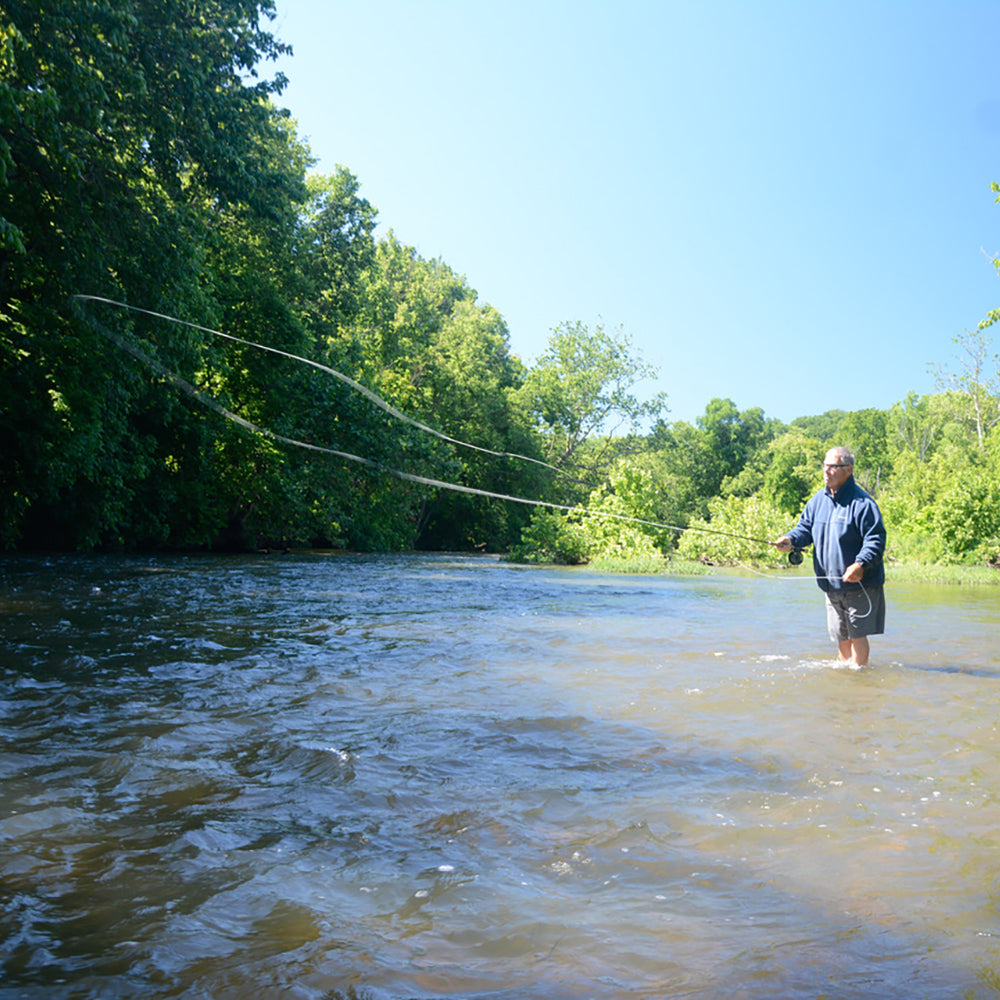
Learn Fly Fishing at Murray’s Fly Shop: Classes, Workshops & Schools
Welcome to Murray’s Fly Shop – Your Fly Fishing Learning Hub At...
-
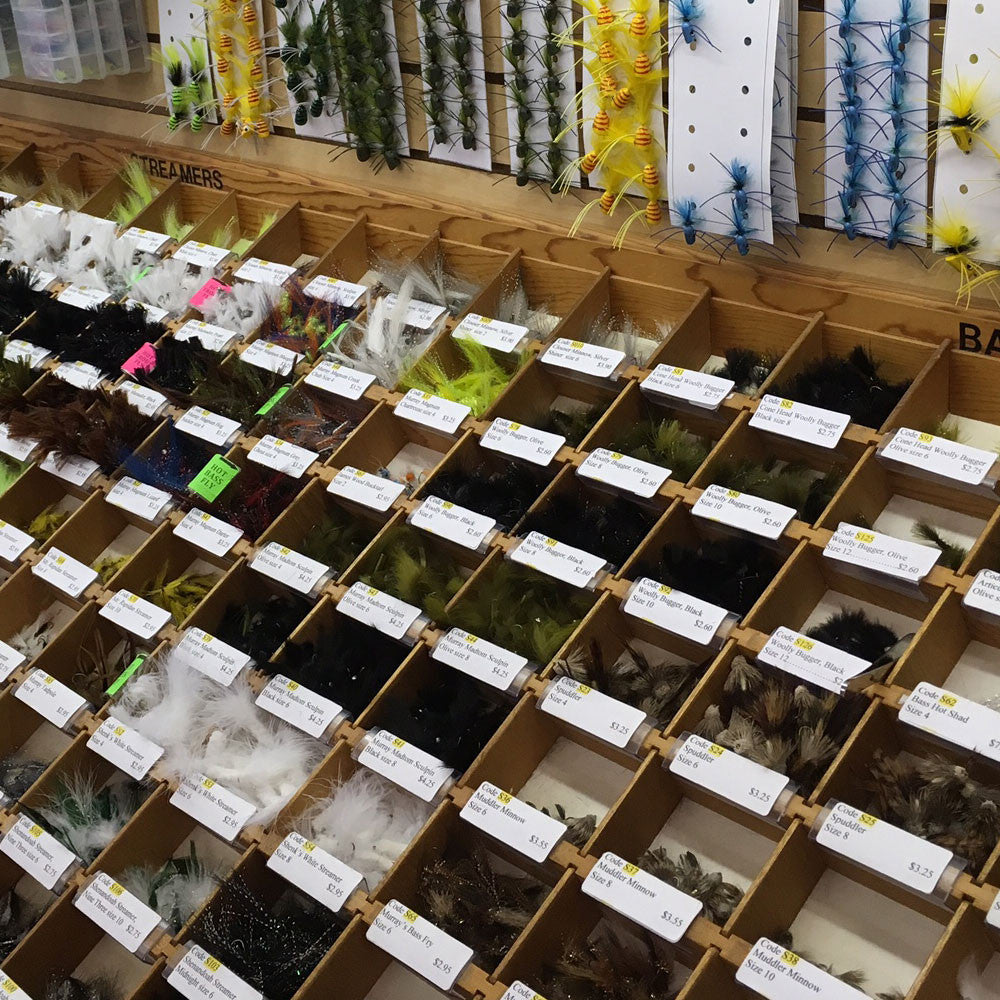
Featured Flies of the Month
Harry Murray's recommended fly list for this time of the year. (March...
-
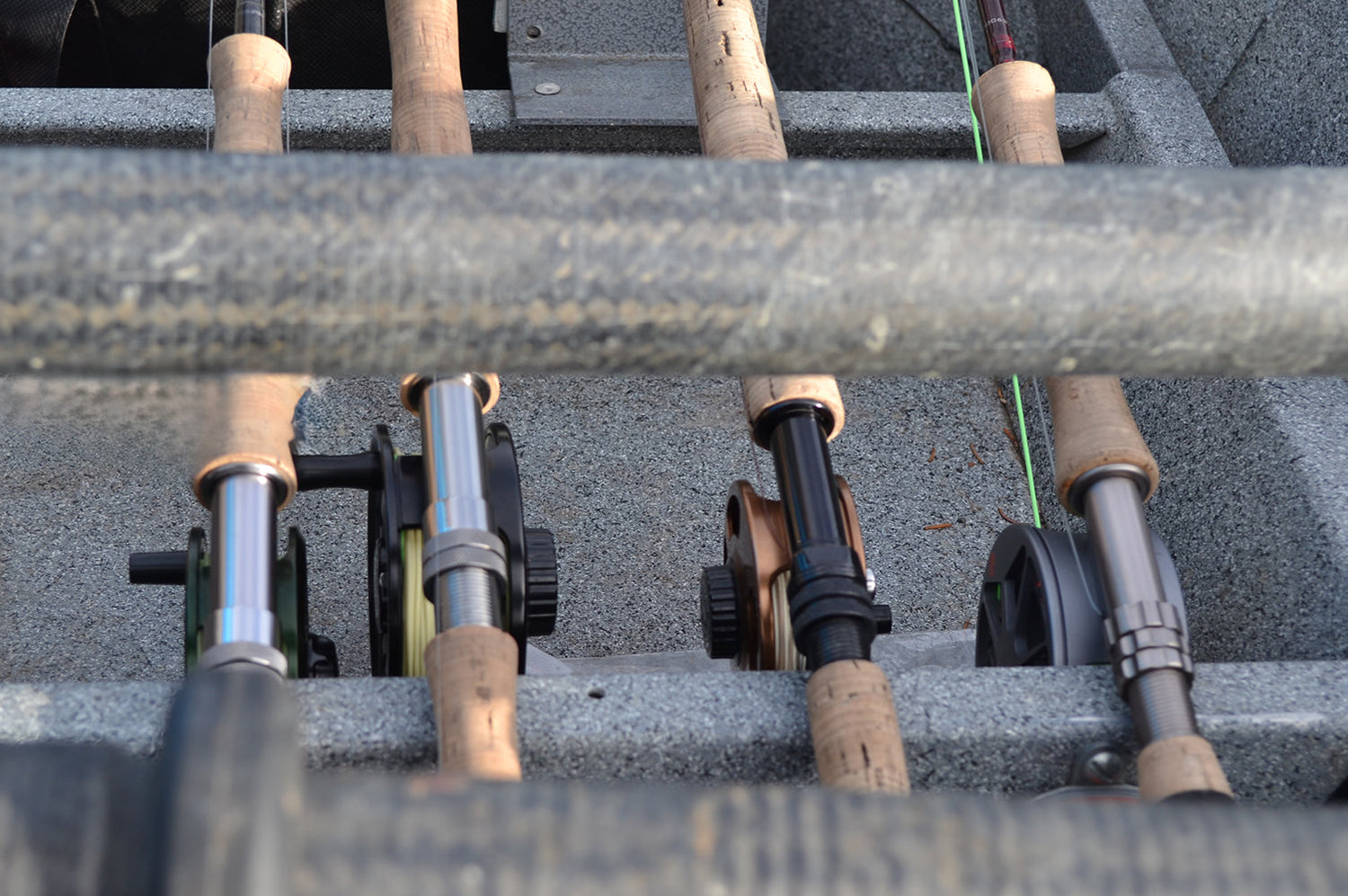
Fly Fishing Rod Outfits
Fly Fishing Rod and Reel Outfits for Smallmouth Bass fly fishing, Trout...
